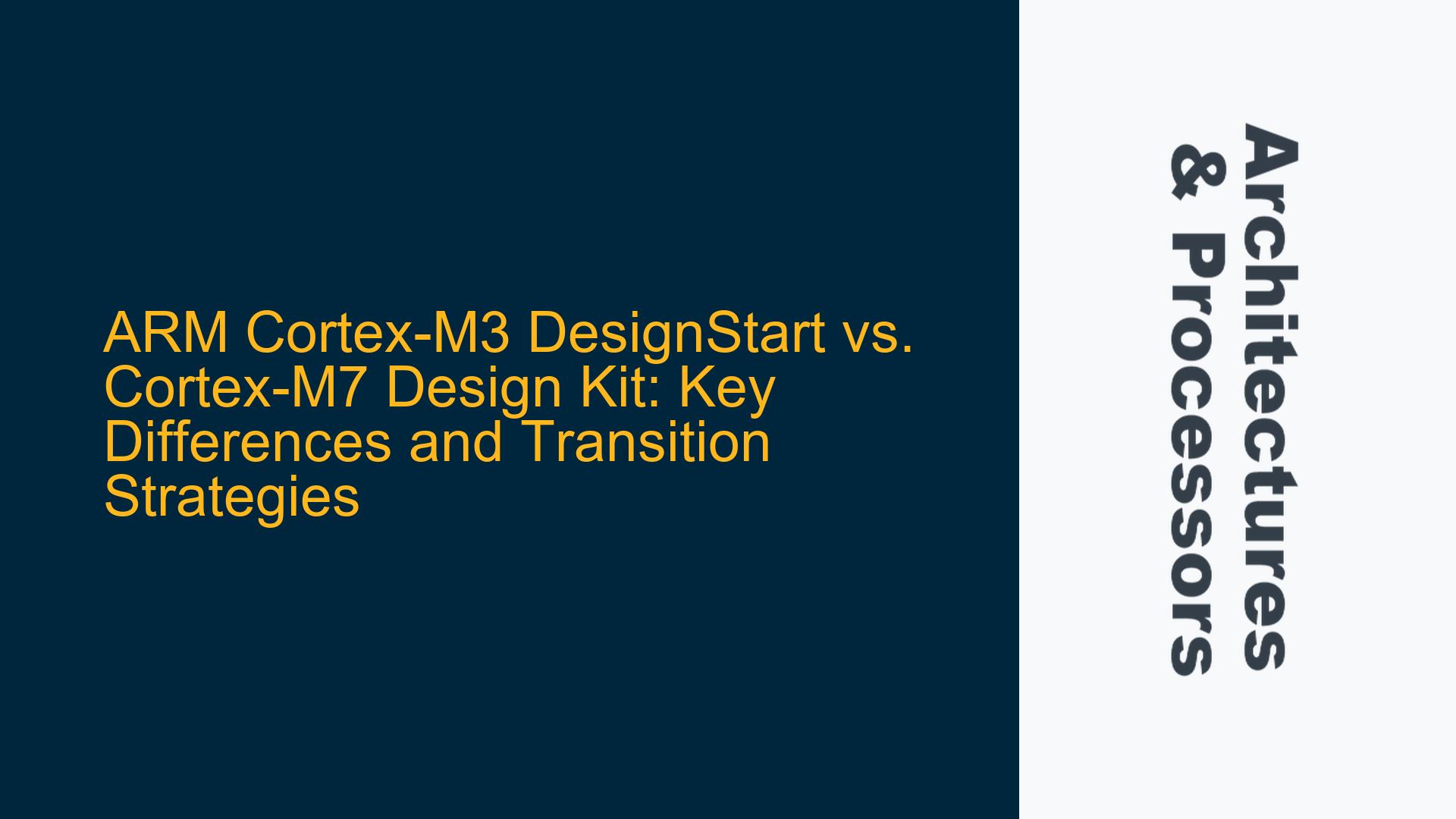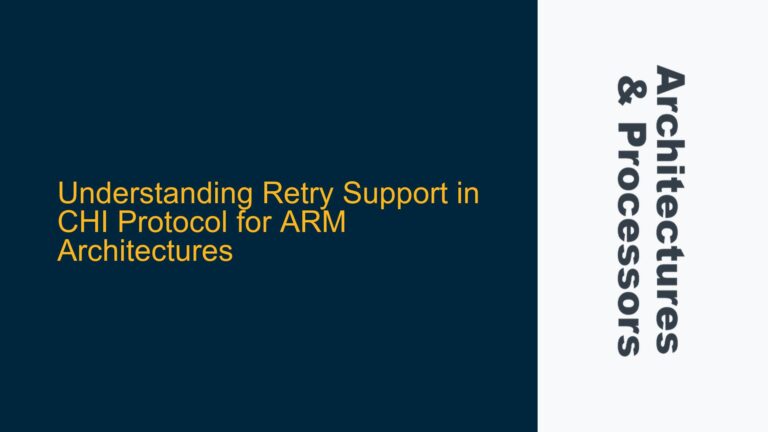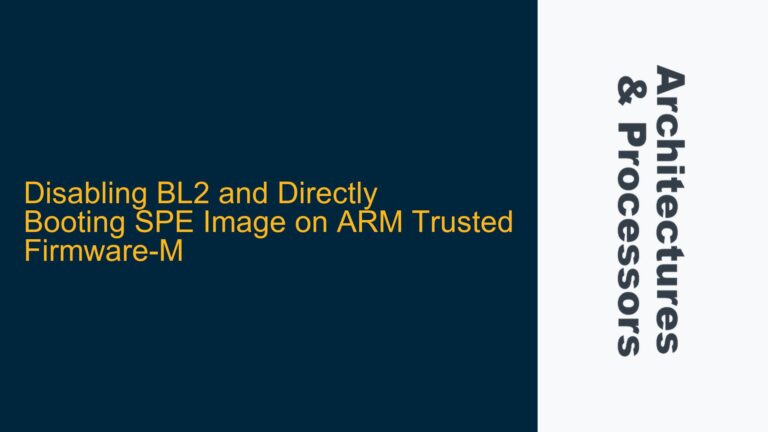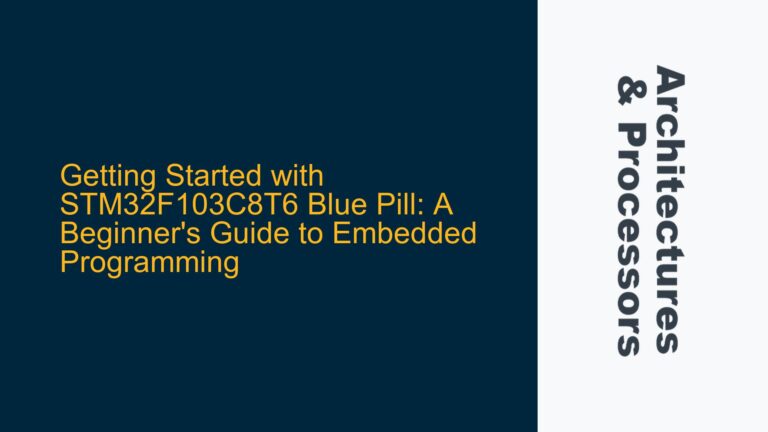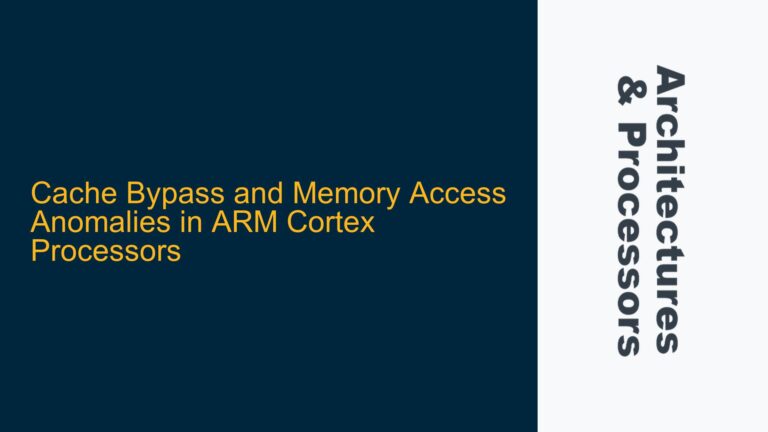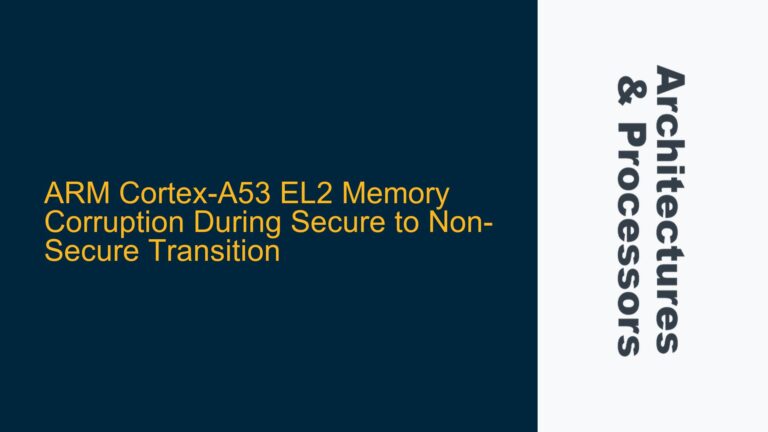ARM Cortex-M3 DesignStart as a Starting Point for Cortex-M7 Design
The ARM Cortex-M3 DesignStart program provides a foundational platform for developers to explore and implement ARM-based SoC designs. It includes the RTL (Register Transfer Level) code for the Cortex-M3 processor, along with a testbench and documentation, enabling users to simulate, synthesize, and implement the design. The Cortex-M3 is a well-established processor core, widely used in embedded systems due to its balance of performance, power efficiency, and simplicity. However, the Cortex-M7 represents a significant leap in terms of performance, features, and complexity. The Cortex-M7 introduces a dual-issue superscalar pipeline, optional floating-point unit (FPU), and enhanced memory interfaces, making it suitable for more demanding applications such as digital signal processing (DSP) and high-performance embedded systems.
While the Cortex-M3 DesignStart program is an excellent starting point for understanding ARM’s RTL design flow and verification methodologies, transitioning to the Cortex-M7 Design Kit requires careful consideration of architectural differences, verification strategies, and system-level integration challenges. The Cortex-M7’s advanced features, such as its cache architecture, TCM (Tightly Coupled Memory) interfaces, and higher clock frequencies, introduce new complexities that are not present in the Cortex-M3. Therefore, while the Cortex-M3 DesignStart can serve as a useful introduction, it is essential to recognize the additional steps required to adapt to the Cortex-M7’s architecture.
Architectural and Verification Differences Between Cortex-M3 and Cortex-M7
The Cortex-M3 and Cortex-M7 processors share some commonalities, such as the ARMv7-M instruction set architecture and support for the AMBA AHB-Lite bus protocol. However, the Cortex-M7 introduces several advanced features that necessitate a different approach to design and verification. One of the most significant differences is the Cortex-M7’s dual-issue superscalar pipeline, which allows the processor to execute two instructions per clock cycle under certain conditions. This feature requires careful consideration during RTL design and verification to ensure correct pipeline behavior and avoid hazards such as data dependencies and branch mispredictions.
Another key difference is the Cortex-M7’s optional FPU, which supports single-precision and double-precision floating-point operations. The inclusion of an FPU introduces additional complexity in both the RTL design and verification processes. For example, the FPU’s pipeline must be verified to ensure correct handling of floating-point exceptions, rounding modes, and special values such as NaN (Not a Number) and infinity. Additionally, the FPU’s integration with the processor’s pipeline and memory system must be thoroughly tested to ensure correct operation under all conditions.
The Cortex-M7 also features a more advanced memory system, including optional instruction and data caches, as well as TCM interfaces. The caches introduce new challenges in terms of coherency, particularly when DMA (Direct Memory Access) transfers are involved. The TCM interfaces, which provide low-latency access to critical data and instructions, require careful configuration and verification to ensure optimal performance. Furthermore, the Cortex-M7’s higher clock frequencies and more aggressive power management features necessitate a more rigorous approach to timing analysis and power domain verification.
Strategies for Transitioning from Cortex-M3 DesignStart to Cortex-M7 Design Kit
To successfully transition from the Cortex-M3 DesignStart program to the Cortex-M7 Design Kit, developers should adopt a systematic approach that addresses the architectural and verification differences between the two processors. The first step is to thoroughly review the Cortex-M7 Technical Reference Manual (TRM) and associated documentation to gain a deep understanding of the processor’s features and requirements. This includes studying the pipeline architecture, memory system, and peripheral interfaces, as well as the recommended design and verification methodologies.
Next, developers should update their RTL design to accommodate the Cortex-M7’s advanced features. This may involve modifying the pipeline to support dual-issue execution, integrating the optional FPU, and configuring the cache and TCM interfaces. It is also important to update the synthesis constraints to account for the Cortex-M7’s higher clock frequencies and more aggressive timing requirements. During this phase, developers should pay close attention to potential timing and integration issues, such as pipeline hazards, cache coherency problems, and power domain crossings.
Verification is a critical aspect of the transition process, and developers should adopt a comprehensive approach that covers both functional and non-functional aspects of the design. This includes creating a detailed verification plan that addresses the Cortex-M7’s unique features, such as the dual-issue pipeline, FPU, and cache architecture. The verification plan should include a mix of directed tests, constrained random tests, and formal verification techniques to ensure thorough coverage of all corner cases. Additionally, developers should leverage industry-standard verification methodologies such as UVM (Universal Verification Methodology) to create reusable testbenches and verification components.
System-level simulation is another important aspect of the verification process, particularly for complex designs that include multiple IP blocks and peripherals. Developers should use a system-level simulation environment to verify the interaction between the Cortex-M7 processor and other components of the SoC, such as memory controllers, DMA engines, and communication interfaces. This includes testing the system’s behavior under various operating conditions, such as high load, low power, and fault scenarios.
Finally, developers should consider the challenges associated with DFT (Design for Test) and power domain management. The Cortex-M7’s advanced power management features, such as multiple power domains and dynamic voltage and frequency scaling (DVFS), require careful configuration and verification to ensure correct operation. Additionally, the inclusion of caches and TCM interfaces introduces new challenges in terms of testability, particularly for manufacturing tests. Developers should work closely with their DFT and power management teams to address these challenges and ensure a smooth transition to the Cortex-M7 Design Kit.
In conclusion, while the Cortex-M3 DesignStart program provides a useful introduction to ARM-based SoC design, transitioning to the Cortex-M7 Design Kit requires a thorough understanding of the processor’s advanced features and a systematic approach to design and verification. By carefully reviewing the Cortex-M7 TRM, updating the RTL design, adopting a comprehensive verification strategy, and addressing DFT and power domain challenges, developers can successfully transition to the Cortex-M7 and leverage its enhanced performance and capabilities for their embedded systems.
